Keywords
|
| Energy harvesting, Wireless sensor Network, Multi energy multi data transfer (MEMD). |
INTRODUCTION
|
| From last few decays, Wireless sensor Networks (WSN) have drawn the attention of researchers to deal with the theoretical and practical challenges in wireless communication [1][8]. A wireless sensor networks is a large number of small sensing self-powered nodes which gather information or detect special events and communicate in a wireless fashion, with the end goal of handing their processed data to a base station. The sensor nodes are typically battery powered, energy optimization and efficiency is extremely important in WSNs. Sensing, processing and communication are three key elements whose combination in one tiny device gives rise to a vast number of applications [2]. Wireless sensor networks have application to the most diverse fields such as Environmental monitoring, warfare, child education, surveillance, micro-surgery, and agriculture [8]-[13]. Wireless sensor networks provide many opportunities, but also pose many challenges, such as the fact that energy is a scarce and usually non-renewable resource. |
| A wireless sensor network is energy constrained system which can increase their usable lifetimes by extracting energy from their environment. Energy supply is a major design constraint in wireless sensor networks and the lifetime is limited by battery supplies. The size of the battery exceeds most other system components in many sensor nodes. One way to solve this problem is to provide the network with capabilities to automatically feed itself from environment, and achieving significantly longer lifetimes and reducing the battery size. Other method is an energy harvesting circuit and a super capacitor based energy storage system for wireless sensor nodes (WSN). |
| Energy harvesting capabilities in wireless sensor networks introduces many design questions about the construction of such systems such as how can a node use its harvesting abilities to increase its lifetime [3] and can a node adapt its power consumption profile online so as to subsist indefinitely on a given energy source without compromising its task performance. |
| The rest of the paper is organized as follows. In section II, Wireless Sensor Networks is explained. In Section III, explain the Energy Harvesting Wireless Sensor Network with Multi energy with multi data transfer (MEMD) and Single energy with multi data transfer (SEMD). In Section IV, simulation results are explained. Finally, conclusions are drawn in Section V. |
WIRELESS SENSOR NETWORKS
|
| Wireless Sensor Network is a network, which consists of spatially distributed sensor nodes to monitor physical or environmental conditions, such as temperature, light, vibration, motion or pollutants. A node contains a processor and multiple types of memory, may have a transceiver, include a power source, and accommodate various sensors. These components are integrated on a single or multiple boards, and packaged in a small box. A WSN usually consists of tens to thousands of such nodes that communicate through wireless channels for information routing and processing. Each node collects information about its environment and cooperatively transfers data through the wireless network to a sink node. The collected information is processed either at the node, or at the base station, or in any combination of these. Sensor nodes of energy-efficient WSNs are usually battery-driven, and hence work on an extremely frugal energy budget. |
ENERGY HARVESTING WIRELESS SENSOR NETWORK
|
| Energy efficiency is a primary concern in Wireless Sensor Network and it has been widely studied [4]. For a WSN only powered by standard batteries, it is not difficult to imagine that the whole network will lose effectiveness after some critical nodes’ batteries gradually drained. The shortest path to base station is implicitly also the least energy consuming path to base station. In traditional WSN, the energy source is limited. When the power source of node finish, it cannot continue to work unless it is recharged again. So the effort was to design energy-efficient network protocols to maximize the lifetime of WSN by minimizing energy usage. Energy Harvesting wireless sensor network (EH-WSN) is a kind of WSN that uses rechargeable power supply instead of using traditional battery [5]. |
| This unlimited power can be provide by environment such as light, vibration and heat. Then we store the harvested energy in a storage device. When the device uses energy harvested instead of battery, the residual energy is no more a useful quantity to preserve. As shown in fig. 1 we can have access to unlimited power, we can have infinite lifetime in network. Fig. 2 shows the component of Energy Harvesting WSN. |
A.MULTI ENERGY WITH MULTI DATA TRANSFER (MEMD)
|
| Consider a simple case of two nodes ’a’, ’b’ with Multi energy with multi data transfer as shown in fig 3. The timing diagram of the protocol is shown in fig 4. Node ’b’ transmits its data to node ’a’ for ’x2’ time interval. Node ’a’ transmits the combined data (its own data and node ’b’ data) for ’x1’ time interval. Assuming some compression at node ’a’, the data sent by node ’a’ will not the total data but the compressed data. so we have to consider some compression factor ’k’. So the range of ’k’ will be 0.5 to 1 as x1= 2kx2. So k equal 0.5 is the minimum allowable value and it can be interpreted as we can compress the total bits maximum to half the number of bits and not more that. ’k’ equal one implies no compression. Node ’a’ transmits energy to node ’b’ for ’x3’ time interval. Remaining time it will be receiving energy from the source. The equations of energy in one time period at both nodes are as shown below. |
 |
 |
| Where p1, p2 are received powers from source at nodes ’a’, ’b’. ptx, prx are transmission and reception power consumptions. e1, e2 are rustication efficiencies at respective power levels. |
B. Single Energy with Multi Data Transfer (SEMD)
|
| Consider a simple case of two nodes ’a’, ’b’ with Single energy with multi data transfer as shown in fig 5. The timing diagram of the protocol is shown in fig 6. In this case, the multi hop communication will be similar to that of above case. But the energy transfer is only from source to nodes. So the equations governing the energies in one time period at both nodes are as follows |
 |
 |
IV. RESULT AND DISCUSSION
|
| In this example following parameters are considered as Atlas patch antenna of 3 dbi is considering i.e. gt=gr=3 dbi, reference distance do= 0.5 m, path loss exponent n = 3, power radiated (P) = 40 dbm ( in between 10 W to 20 W) 40 dbm = 10 W, Fading Loss = 6 db, C100 Transceiver ,data rate = 76.8 kbps, transmit current (It)= 5.3 mA, receive current Ir = 7.4 mA Two approach are used first is Ea=0 For SEMD and MEMD and second is Eb=0 For SEMD and MEMD. Also consider N1 = number of bits from node A to S, N2= number of bits from node B to A, X1 = fraction of time that transfer data from A to S and X2 = fraction of time that transfer data from B to A. |
| Fig. 7 shows the pa, pb vs k, when Ea=0 for Multi energy with multi data transfer (MEMD) and Fig. 8 shows the pa, pb vs k, when Eb=0 Multi energy with multi data transfer (MEMD). Fig. 9 shows the N1, N2 vs k when Ea=0 and Fig. 10 shows the pa,pb vs k when Ea=0 for Single energy with multi data transfer (SEMD). Fig. 11shows the N1,N2 vs k when Ea=0 and Fig. 12 shows the pa, pb vs k when Ea=0 for Single energy with multi data transfer (SEMD). |
V.CONCLUSION
|
| In this paper equi-energy distribution for a three node case is presented. The multi hop energy transfer and direct energy transfer approaches are compared. The optimum configuration of parameters for multi hop charging is required which is analyzed for a certain configuration of a network. . In this paper, simulation of Energy harvesting Wireless sensor Network (EHWSN) is presented. Finally some examples are presented with Single energy with multi data transfer (SEMD) and Multi energy with multi data transfer (MEMD). |
Figures at a glance
|
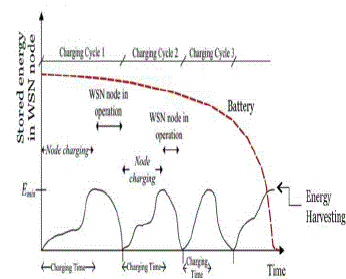 |
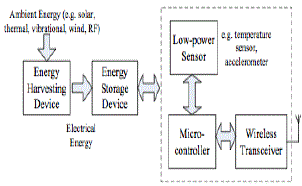 |
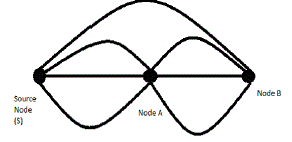 |
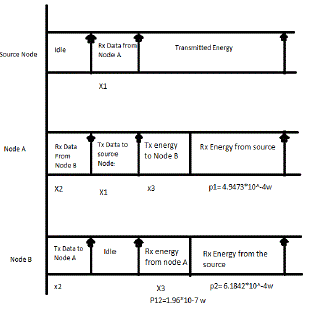 |
| Figure 1 |
Figure 2 |
Figure 3 |
Figure 4 |
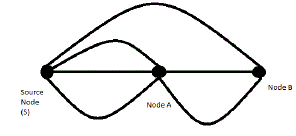 |
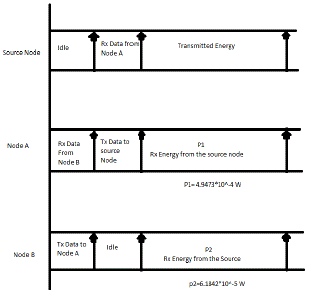 |
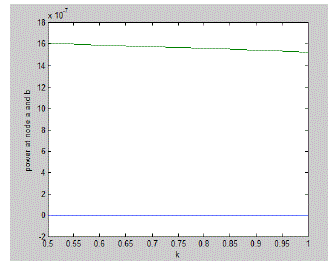 |
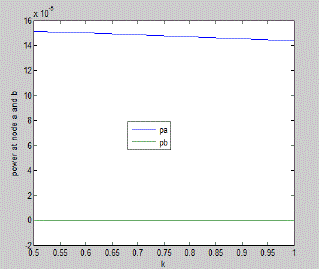 |
| Figure 5 |
Figure 6 |
Figure 7 |
Figure 8 |
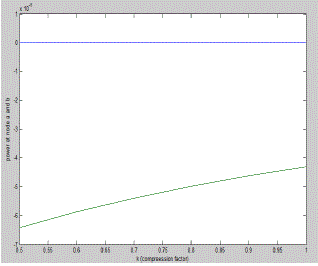 |
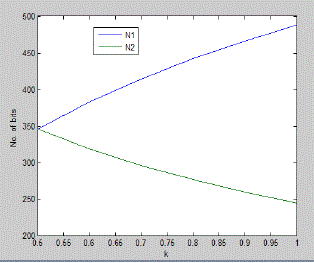 |
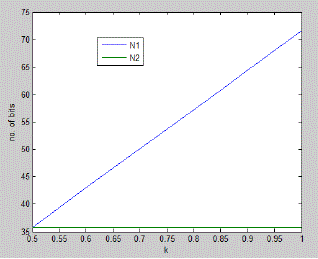 |
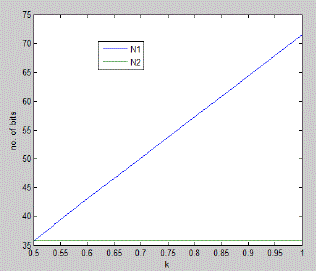 |
| Figure 9 |
Figure 10 |
Figure 11 |
Figure 12 |
|
| |
References
|
- I.F. Akyildiz, W. Su, Y. Sankarasubramaniam, and E. Cayirci, “A survey on sensor networks,” in IEEE Communications Magazine,pp. 102–114, Aug. 2002.
- L.B. Ruiz, L.H.A. Correia, L.F.M. Vieira, D.F. Macedo, E.F. Nakamura, C.M.S. Figueiredo, M.A.M. Vieira, E.H.B.
- Maia, D. Câmara, A.A.F. Loureiro, J.M.S. Nogueira, D.C. da Silva Jr., and A.O. Fernandes, “Architectures for wireless sensornetworks (In Portuguese),” in Proceedings of the 22nd Brazilian Symposium on Computer Networks (SBRC’04), Gramado, Brazil, pp.167–218, May 2004. Tutorial. ISBN: 85-88442-82-
- A. Kansal, J. Hsu, S. Zahedi, and M. B. Srivastava, "Power management in energy harvesting sensor networks," ACM Transactionson Embedded Computing Systems, 2006.
- E. Lattanzi, E. Regini, A. Acquaviva, and A. Bogliolo. Energetic sustainability of routing algorithms for energy-harvesting wireless sensor networks. Computer Communications, 30(14):2976-2986, 2007.
- V. Raghunathan, A. Kansal, J. Hsu, J. Friedman, and M. Srivastava. Design consideration for solar energy harvesting wirelessembedded systems. In IPSN 2005, April 2005.
- X. Jiang, J. Polastre, and D. Culler. Perpetual environmentally powered sensor networks. In IPSN/SPOTS 2005, April 2005.
- J. A. Paradiso and T. Starner, “Energy scaveging for mobile and wireless electronics,” IEEE Perv. Comput., vol. 4, no. 1, pp. 18–27,Jan.–Mar. 2005.
- S. Roundy, E. S. Leland, J. Baker, E. Carleton, E. Reilly, E. Lai, B. Otis, J. M. Rabaey, P. K. Wright, and V. Sundararajan,“Improving power output for vibration-based energy scavengers,” IEEE Perv. Comput., vol. 4, no. 1, pp. 28–36, Jan.–Mar. 2005.
- XenofonFafoutis and Nicola Dragoni, “An On-Demand MAC Protocol for Energy Harvesting – Wireless Sensor Networks”, Pro.ofthe 8th ACM Symposium on Performance evaluation of wireless ad hoc, sensor, and ubiquitous networks, 2011, pp. 49-56.
- A. Kansal, J. Hsu, S. Zahedi, and M. B. Srivastava, “Power management in energy harvesting sensor networks”, ACM Trans. Embed.Comput. Syst., 2007, p. 32 .
- P. Corke, P. Valencia, P. Sikka, T. Wark, and L. Overs, “Long-duration solar-powered wireless sensor networks”, Pro.of the 4thWorkshop on Embedded Networked Sensors, 2007, pp. 33-37.
- T. Jorge, V. J. Fernando, F. M. Joao, “Application of Wireless Sensor Networks to Automobiles”, Measurement Science Review,2008.
- MikkelKoefoedJakobsen, Jan Madsen, and Michael R. Hansen, “DEHAR: A Distributed Energy Harvesting Aware RoutingAlgorithm for Ad-hoc Multi-hop Wireless Sensor Networks”, Proceedings of the 2010 IEEE International Symposium on A World ofWireless, Mobile and Multimedia Networks,010, pp. 1-9.
|